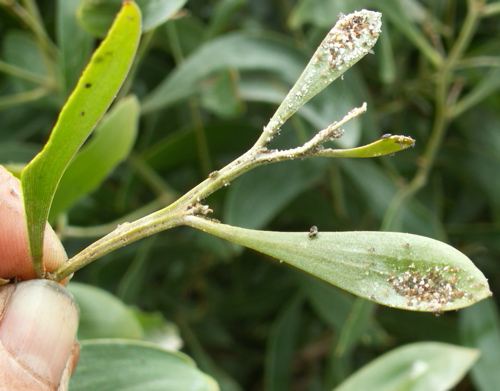![APHIS[1]](https://www.martinezbeavers.org/wordpress/wp-content/uploads/2011/08/APHIS1.jpg) Some people say I’m too negative about the USDA. I’m always berating them for their vicious beaver/woodpecker/goose-killing ways. Maybe I should be more balanced. Say something nice about them for a change.
Some people say I’m too negative about the USDA. I’m always berating them for their vicious beaver/woodpecker/goose-killing ways. Maybe I should be more balanced. Say something nice about them for a change.
Okay.
Once I was attending a lecture in graduate school and, bored beyond belief, I glanced down at my sweater sleeve. It happened to have tiny flecks of color in the wool and the random pattern was fun to look at – or more fun than the lecture anyway. This time, though, the tiny flecks were moving.
I left class in a panic, certain I had such a bad case of head lice that they were dropping off in droves. I drove straight to the daycare where I’d worked forever knowing they could help. They fearlessly sat me down and checked my head. Then said, nope not lice.
I bug bombed the house. Threw out the sweater and shivered my way onwards. I didn’t see any more crawlies. I thought I was safe. Chalk it up to experience.
Next week I went back to class. Same teacher, same room, (practically the same lecture). I glanced down to keep from falling asleep and saw MORE CRAWLING!!!!!!!
This time I caught a few of the escapees. Someone told me to bring them to USDA in Concord to figure out what they were. They soberly took my tiny bugs. Dropped them in a vial of fermaldehyde and shipped to Sacramento. It was surreal, but oddly comforting. 2 weeks later the report came back.

As it happened they were Acacia Psyllids, a problem for the trees but not harmful to us or sweaters, and I had to walk through Acacia trees to get to class. And that, ladies and gentleman, is a good use of the USDA.
Now lets talk about this next story.
Seems there was an apartment complex in South Carolina that sported some recovering geese, injured by fishing line and beloved by residents. (Well, SOME of the residents).
Taxpayers subsidizing wild life extermination program, probe shows
By MARY LOU SIMMS
The trucks pulled up at dawn. PollyAnna, a year-old disabled goose whose wing feathers were growing back, was asleep when the trappers approached. Not long after, Debbie Dangerfield, a real estate agent and 16-year resident of River’s Edge, a sprawling residential complex in Charleston, S.C., was leaving her condo to check on PollyAnna when she noticed she was missing. Also gone were a dozen or so geese parents and their young.
The crippled geese also seemed to have vanished: Nibbles, a young gander with a damaged wing; Limp, so-named because of an upper-leg injury, and VeeVee, the victim of fishing-line entrapment.
As Dangerfield approached the entrance to the complex, she noticed two USDA trucks pulling away from the guard house and broke into a dead run, reaching the vehicles as they slowed to accommodate speed bumps. She begged the drivers to pull over, peering inside one of the trucks as they did.
There she saw PollyAnna crammed into a crate with half a dozen other geese.
Ouch. That seems harsh. I know you have jobs to do and all, saving airways from disabled geese or whatever, but just FYI, you probably shouldn’t ever take wildlife with a name. Don’t worry. They weren’t completely heartless. They did give her the “Sophie’s Goose Choice”
Eventually the police came and the River’s Edge management agreed to let her keep one bird.
Mary Lou’s EXCELLENT article follows goose-killing in New Jersey, Alabama, Mississippi and Oregon. It’s a grim shocking look at a fairly invisible outrage. She describes a freedom of Information Act-forced disclosure documenting countless wildlife killed by the USDA. (Including beavers of course.) Since the article is paid for by a private DC grant, and she works for the McClatchy Tribune (Same as the reporter I spoke with before the festival) I have to imagine that this data is making the rounds and going to generate a few similar stories in the future.
Good. It’s about time everyone realized what Unfeeling Sadists Do to Animals.






































